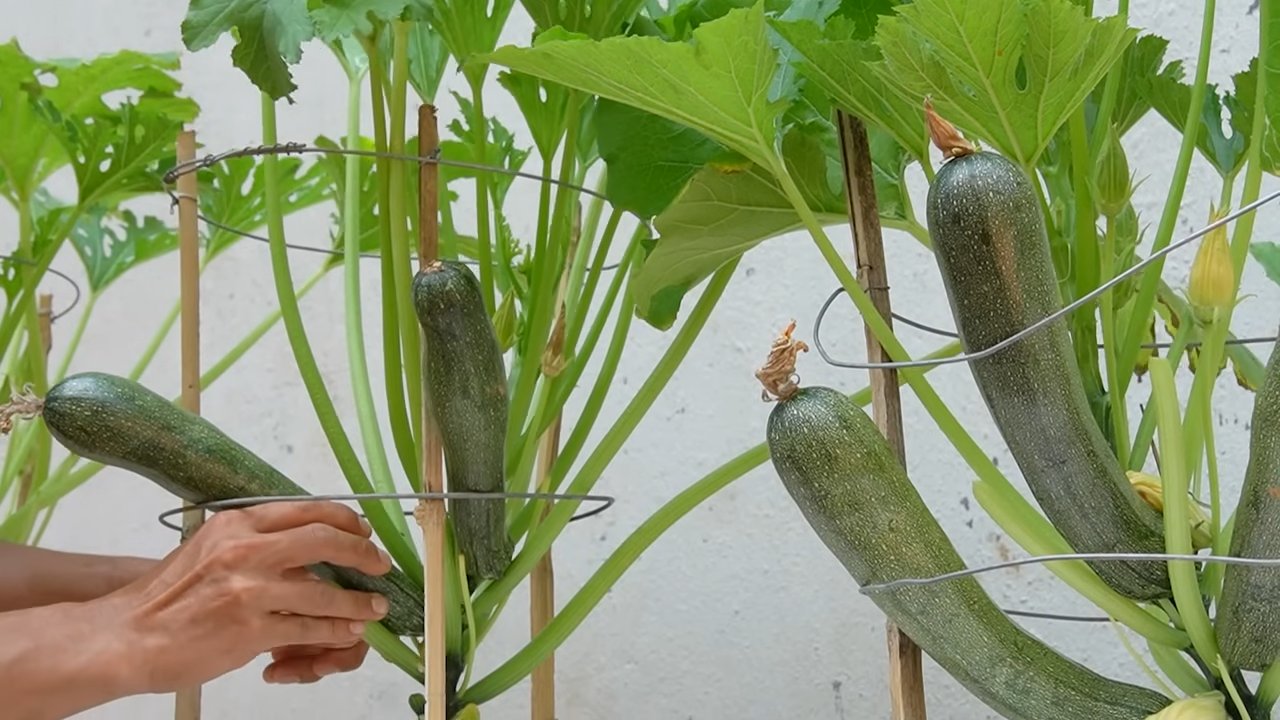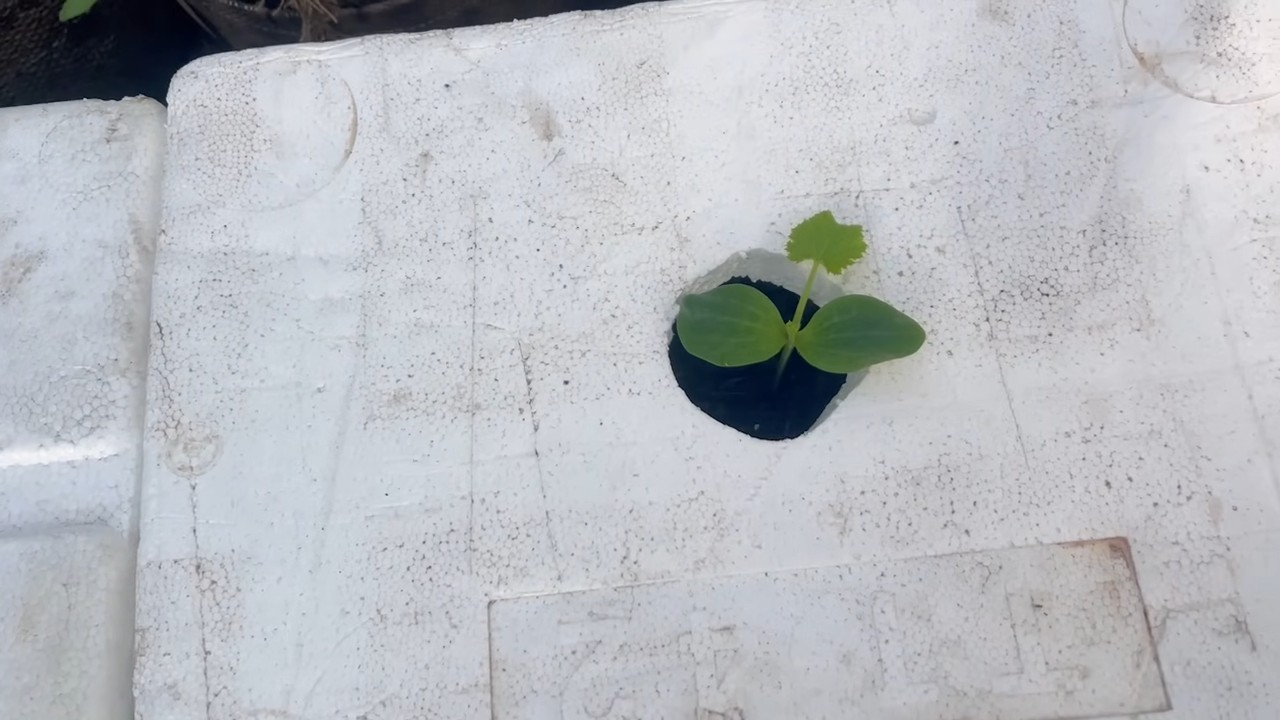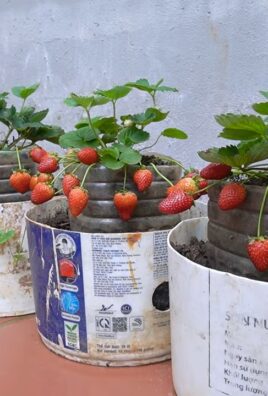Zucchini cooking tips are about to become your new best friend in the kitchen! Have you ever found yourself staring at a mountain of zucchini, wondering how you’re possibly going to use it all before it turns into a mushy mess? I know I have! This versatile vegetable, believed to have originated in the Americas, has become a staple in gardens and kitchens worldwide, offering a mild flavor that adapts beautifully to countless dishes.
But let’s be honest, sometimes zucchini can be a bit… underwhelming. That’s where these DIY cooking tricks come in! We’re diving deep into the world of zucchini, uncovering simple yet effective methods to transform this humble squash into culinary masterpieces. From preventing sogginess to enhancing its natural sweetness, these hacks will elevate your zucchini game to a whole new level.
Why do you need these zucchini cooking tips? Because nobody wants bland, watery zucchini! These tips will help you maximize flavor, improve texture, and ultimately, enjoy this nutritious and abundant vegetable to its fullest potential. Get ready to say goodbye to zucchini boredom and hello to a world of delicious possibilities!

Unlock Zucchini’s Culinary Potential: A DIY Guide to Delicious Dishes
Hey there, fellow food enthusiasts! Zucchini, that versatile summer squash, often gets a bad rap for being bland or boring. But trust me, with a few clever tricks and techniques, you can transform this humble vegetable into a star ingredient. I’m going to share my favorite DIY hacks for cooking zucchini, ensuring it’s never soggy, always flavorful, and a welcome addition to your meals. Let’s dive in!
Tackling Zucchini’s Water Content: The Key to Success
Zucchini’s high water content is often the culprit behind mushy dishes. Before you even think about cooking, you need to address this. Here’s how:
* Grate and Salt: This is my go-to method for zucchini bread, fritters, or anything where you’re using grated zucchini.
* Slice and Sweat: Perfect for grilling, roasting, or sautéing zucchini slices.
* Scoop and Dry: Ideal for stuffed zucchini boats.
Grate and Salt: The Water-Wicking Wonder
1. Grate the Zucchini: Use a box grater or food processor to grate your zucchini. Don’t peel it unless the skin is particularly thick or tough.
2. Salt Generously: Place the grated zucchini in a colander set over a bowl. Sprinkle it generously with salt (about 1 teaspoon per medium zucchini). The salt will draw out the moisture.
3. Let it Sit: Allow the zucchini to sit for at least 30 minutes, or even up to an hour. You’ll be amazed at how much liquid accumulates in the bowl.
4. Squeeze it Dry: This is the most important step! Use your hands or a clean kitchen towel to squeeze out as much excess moisture as possible. You want the zucchini to be almost dry to the touch. Seriously, squeeze hard!
5. Ready to Cook: Now your zucchini is ready to be incorporated into your recipe without making it soggy.
Slice and Sweat: For Perfect Slices Every Time
1. Slice the Zucchini: Cut the zucchini into slices, about 1/4 to 1/2 inch thick, depending on your preference.
2. Salt Lightly: Arrange the slices on a baking sheet lined with paper towels. Sprinkle them lightly with salt.
3. Let it Sweat: Let the slices sit for about 15-20 minutes. You’ll see beads of moisture forming on the surface.
4. Pat Dry: Use another layer of paper towels to pat the slices dry.
5. Ready to Cook: Now your zucchini slices are ready for grilling, roasting, or sautéing.
Scoop and Dry: Preparing Zucchini Boats
1. Halve the Zucchini: Cut the zucchini lengthwise.
2. Scoop Out the Flesh: Use a spoon to scoop out the flesh, leaving about a 1/4-inch border. Reserve the scooped-out flesh for your filling.
3. Salt the Cavities: Sprinkle the inside of the zucchini boats with salt.
4. Let it Drain: Place the zucchini boats upside down on a wire rack or paper towels to drain for about 30 minutes.
5. Pat Dry: Pat the inside of the zucchini boats dry with paper towels.
6. Ready to Fill: Now your zucchini boats are ready to be filled and baked.
Boosting Zucchini’s Flavor: Beyond Bland
Okay, so you’ve tackled the water content. Now let’s talk flavor! Zucchini can be a blank canvas, so it’s up to you to add the pizzazz.
* Herbs and Spices: Don’t be shy!
* Acid: A squeeze of lemon or lime juice brightens everything up.
* Cheese: Because cheese makes everything better, right?
* Umami: Think Parmesan cheese, sun-dried tomatoes, or a splash of soy sauce.
Herb and Spice Power: Your Flavor Arsenal
1. Fresh Herbs: My favorites for zucchini are basil, oregano, thyme, and parsley. Add them towards the end of cooking to preserve their flavor.
2. Dried Herbs: If you’re using dried herbs, add them earlier in the cooking process to allow them to rehydrate and release their flavor.
3. Spices: Garlic powder, onion powder, paprika, chili powder, and cumin are all great options. Experiment and find your favorites!
4. Italian Seasoning: A classic blend that works well with zucchini.
5. Pro Tip: Toast your spices in a dry pan for a minute or two before adding them to the zucchini. This will enhance their flavor.
Acidic Awakening: Brightening Up Your Zucchini
1. Lemon Juice: A squeeze of fresh lemon juice at the end of cooking adds a bright, zesty flavor.
2. Lime Juice: Similar to lemon juice, lime juice adds a tangy twist.
3. Vinegar: A splash of balsamic vinegar or red wine vinegar can add depth and complexity.
4. Pro Tip: Add acid at the end of cooking to prevent it from becoming bitter.
Cheesy Goodness: Adding Richness and Flavor
1. Parmesan Cheese: Grated Parmesan cheese adds a salty, savory flavor.
2. Mozzarella Cheese: Melts beautifully and adds a creamy texture.
3. Feta Cheese: Crumbled feta cheese adds a salty, tangy flavor.
4. Goat Cheese: Adds a creamy, tangy flavor.
5. Pro Tip: Use a combination of cheeses for a more complex flavor profile.
Umami Boost: Adding Savory Depth
1. Parmesan Cheese (Again!): It’s so good, it deserves another mention.
2. Sun-Dried Tomatoes: Add a concentrated tomato flavor.
3. Soy Sauce: A splash of soy sauce adds a salty, savory flavor. Use sparingly!
4. Miso Paste: Adds a rich, umami flavor.
5. Pro Tip: Be careful not to over-salt your dish if you’re using umami-rich ingredients.
Cooking Methods: Mastering the Techniques
Now that you’ve prepped your zucchini and chosen your flavorings, let’s talk about cooking methods.
* Grilling: For a smoky, charred flavor.
* Roasting: For a tender, slightly caramelized texture.
* Sautéing: For a quick and easy side dish.
* Baking: Perfect for zucchini bread, muffins, and stuffed zucchini.
Grilling Zucchini: Smoky Perfection
1. Preheat the Grill: Preheat your grill to medium-high heat.
2. Prepare the Zucchini: Brush the zucchini slices with olive oil and season with salt, pepper, and your favorite herbs and spices.
3. Grill the Zucchini: Grill the zucchini for 2-3 minutes per side, or until tender and slightly charred.
4. Serve Immediately: Serve the grilled zucchini immediately.
Roasting Zucchini: Tender and Flavorful
1. Preheat the Oven: Preheat your oven to 400°F (200°C).
2. Prepare the Zucchini: Toss the zucchini slices or cubes with olive oil, salt, pepper, and your favorite herbs and spices.
3. Roast the Zucchini: Spread the zucchini in a single layer on a baking sheet. Roast for 15-20 minutes, or until tender and slightly caramelized.
4. Serve Immediately: Serve the roasted zucchini immediately.
Sautéing Zucchini: Quick and Easy
1. Heat the Oil: Heat olive oil in a large skillet over medium heat.
2. Add the Zucchini: Add the zucchini slices or cubes to the skillet and cook for 5-7 minutes, or until tender and slightly browned.
3. Season and Serve: Season with salt, pepper, and your favorite herbs and spices. Serve immediately.
Baking Zucchini: Versatile and Delicious
1. Follow Your Recipe: Whether you’re making zucchini bread, muffins, or stuffed zucchini, follow the recipe instructions carefully.
2. Don’t Overbake: Overbaking can result in dry or mushy zucchini.
3. Test for Doneness: Use a toothpick or cake tester to check for doneness.
DIY Zucchini Noodles (Zoodles): A Healthy Alternative
Want to cut down on carbs? Zucchini noodles, or zoodles, are a fantastic alternative to pasta.
* Spiralize: Use a spiralizer to create zucchini noodles.
* Salt and Drain: Salt the zoodles and

Conclusion
So, there you have it! Mastering these simple yet effective zucchini cooking tips can truly transform your culinary experience with this versatile vegetable. No longer will you be stuck with bland, soggy zucchini. Instead, you’ll be creating dishes bursting with flavor and boasting the perfect texture.
Why is this a must-try? Because it’s about more than just cooking zucchini; it’s about unlocking its full potential. It’s about saving time and effort in the kitchen while simultaneously elevating your meals. It’s about reducing food waste by knowing how to properly store and utilize every part of the zucchini. And most importantly, it’s about enjoying delicious, healthy food that you’ve prepared with confidence and skill.
Consider these variations to further personalize your zucchini cooking journey:
* **Spice it up:** Experiment with different spice blends. A touch of smoked paprika, chili powder, or even a hint of cinnamon can add a unique depth of flavor to your zucchini dishes.
* **Herbaceous delight:** Fresh herbs like basil, oregano, thyme, and parsley pair beautifully with zucchini. Add them towards the end of cooking to preserve their vibrant flavors.
* **Cheese, please:** A sprinkle of Parmesan, feta, or goat cheese can elevate your zucchini dishes to a whole new level of deliciousness.
* **Sweet zucchini:** Don’t limit yourself to savory dishes! Zucchini can also be used in sweet treats like muffins, breads, and cakes. Its mild flavor makes it a perfect addition to baked goods.
* **Grill master:** Grilling zucchini brings out its natural sweetness and adds a smoky char. Marinate it beforehand for even more flavor.
We are confident that these zucchini cooking tips will become an invaluable part of your culinary repertoire. They are easy to implement, incredibly effective, and will undoubtedly enhance your enjoyment of this wonderful vegetable.
Now, it’s your turn! We encourage you to try these tips and share your experiences with us. What are your favorite ways to cook zucchini? What variations have you discovered? Let us know in the comments below! We can’t wait to hear about your zucchini adventures. Happy cooking!
Frequently Asked Questions (FAQ)
Why is my zucchini always soggy?
Soggy zucchini is a common problem, but easily avoidable. The main culprit is excess moisture. Zucchini has a high water content, and when cooked, it releases a significant amount of liquid. To combat this, try these techniques:
* **Salting:** Before cooking, slice or grate your zucchini and toss it with salt. Let it sit for about 15-30 minutes. The salt will draw out excess moisture. Rinse the zucchini thoroughly and pat it dry with paper towels before cooking.
* **High Heat:** Cook zucchini over high heat to encourage evaporation. Avoid overcrowding the pan, as this will lower the temperature and cause the zucchini to steam instead of sauté.
* **Proper Cooking Method:** Choose cooking methods that minimize moisture retention, such as grilling, roasting, or sautéing. Avoid boiling or steaming, which can make zucchini waterlogged.
How do I store zucchini properly?
Proper storage is crucial for maintaining the quality and freshness of zucchini. Here’s how to do it:
* **Whole Zucchini:** Store whole, unwashed zucchini in a perforated plastic bag in the refrigerator crisper drawer. This will help maintain humidity and prevent it from drying out. It should last for about 1-2 weeks.
* **Cut Zucchini:** Wrap cut zucchini tightly in plastic wrap or store it in an airtight container in the refrigerator. Use it within a few days, as it will deteriorate more quickly than whole zucchini.
* **Freezing Zucchini:** For long-term storage, you can freeze zucchini. Blanch it first by boiling it for 1-2 minutes, then immediately transferring it to an ice bath to stop the cooking process. Drain well, pat dry, and freeze in a single layer on a baking sheet. Once frozen, transfer to a freezer bag or container. Frozen zucchini is best used in cooked dishes, as its texture may change slightly.
Can I eat zucchini seeds?
Yes, you can absolutely eat zucchini seeds! They are a good source of nutrients and have a mild, nutty flavor.
* **Preparation:** Scoop out the seeds from the zucchini. Rinse them thoroughly to remove any pulp.
* **Roasting:** Toss the seeds with a little olive oil, salt, and your favorite spices. Spread them in a single layer on a baking sheet and roast at 350°F (175°C) for 10-15 minutes, or until golden brown and crispy.
* **Adding to Dishes:** Roasted zucchini seeds can be added to salads, soups, or used as a topping for other dishes.
What are some creative ways to use zucchini?
Zucchini is incredibly versatile and can be used in a wide variety of dishes. Here are some creative ideas:
* **Zucchini Noodles (Zoodles):** Use a spiralizer to create zucchini noodles as a low-carb alternative to pasta.
* **Zucchini Fritters:** Grate zucchini and mix it with flour, eggs, and seasonings to make delicious fritters.
* **Zucchini Bread/Muffins:** Add grated zucchini to your favorite bread or muffin recipe for a moist and flavorful treat.
* **Zucchini Boats:** Hollow out zucchini and fill it with a mixture of ground meat, vegetables, and rice.
* **Zucchini Soup:** Blend cooked zucchini with broth and seasonings for a creamy and healthy soup.
* **Grilled Zucchini:** Marinate zucchini slices and grill them for a smoky and flavorful side dish.
How do I know when zucchini is ripe and ready to harvest (if growing my own)?
If you’re growing your own zucchini, knowing when to harvest is essential for optimal flavor and texture.
* **Size:** Zucchini is typically harvested when it’s about 6-8 inches long. Larger zucchini can become tough and seedy.
* **Skin:** The skin should be smooth, firm, and free of blemishes.
* **Tenderness:** Gently press your fingernail into the skin. If it’s easy to pierce, the zucchini is ripe.
* **Harvesting:** Use a sharp knife or pruning shears to cut the zucchini from the vine, leaving a short stem attached.
Is zucchini healthy? What are its nutritional benefits?
Yes, zucchini is a very healthy vegetable! It’s low in calories and carbohydrates but rich in vitamins, minerals, and antioxidants. Some of its key nutritional benefits include:
* **Vitamin C:** Boosts the immune system and protects against cell damage.
* **Vitamin B6:** Supports brain function and metabolism.
* **Potassium:** Helps regulate blood pressure and muscle function.
* **Fiber:** Promotes digestive health and helps you feel full.
* **Antioxidants:** Protect against free radical damage and reduce the risk of chronic diseases.
Incorporating zucchini into your diet is a great way to improve your overall health and well-being.




Leave a Comment